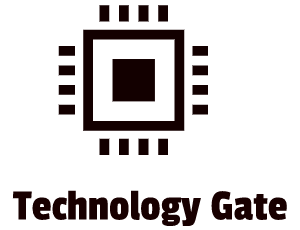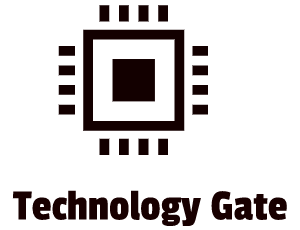After discussing TinyML and Data-Driven Consumer Experience as the latest technological trends relating to data, the next item I would like to discuss is the Convergence of Data Technology which can significantly impact the importance of data.
In recent years, the convergence of data technology with artificial intelligence (AI), cloud computing, the Internet of Things (IoT), and superfast networks such as 5G have transformed how we process, store, and analyze data. This convergence has opened up new possibilities for businesses and individuals, creating new opportunities for innovation and growth.
Artificial Intelligence and Data Technology
The convergence of data technology with AI has been a game-changer for businesses across various industries. AI algorithms can analyze data faster and more accurately than humans, enabling companies to make more informed decisions based on real-time data. These decisions lead to the development of new technologies, such as predictive analytics, which can help businesses forecast trends and make strategic decisions based on data-driven insights.
One of the critical applications of AI in data technology is in the field of natural language processing (NLP). NLP is the branch of AI that enables machines to understand, interpret, and generate human language. With the help of NLP, businesses can analyze vast amounts of textual data such as customer feedback, social media posts, and online reviews. You can use this data to gain insights into customer behavior, identify market trends, and optimize business operations.
Another application of AI in data technology is in the field of computer vision. Computer vision is the ability of machines to interpret and analyze visual data from images and videos. With the help of computer vision, businesses can analyze pictures and videos in real-time, enabling them to make decisions based on real-time visual data. The ability to base decisions on real-time visual data has led to the development of new applications, such as facial recognition technology, which you can use for security and identification purposes.
Cloud Computing and Data Technology
Cloud computing has also played a critical role in the convergence of data technology. With the ability to store vast amounts of data in the cloud, businesses can access their data from anywhere in the world, enabling real-time collaboration and data sharing. Data sharing has led to the development of new cloud-based services, such as software-as-a-service (SaaS) and platform-as-a-service (PaaS), enabling businesses to access powerful tools and services without needing expensive infrastructure.
One of the key benefits of cloud computing in data technology is scalability. Cloud providers such as Amazon Web Services (AWS), Microsoft Azure, and Google Cloud Platform (GCP) offer scalable storage and computing resources that can be quickly provisioned and de-provisioned based on business needs. Scalable storage and computing resources enable businesses to scale their data processing and storage capabilities as their data grows.
Another benefit of cloud computing in data technology is cost efficiency. Cloud providers offer pay-as-you-go pricing models that enable businesses to pay only for the resources they use. Pay-as-you-go pricing models eliminate the need for expensive upfront investments in infrastructure, allowing firms to save costs and allocate resources more efficiently.
The future of cloud computing also looks bright and promising, with various trends and innovations set to revolutionize the industry. One of the significant trends that will continue to gain momentum is the use of hybrid cloud environments that combine private and public cloud infrastructure. Businesses will also increasingly rely on cloud-based AI and machine learning services to process and analyze the massive amounts of data their operations generate. Edge computing, which brings computing resources closer to where data is generated and consumed, will also become more critical as the number of connected devices and sensors increases.
Security and privacy features will remain a top priority, with cloud providers investing in advanced security and encryption technologies to protect sensitive data from cyber threats.
You can also expect cloud-based gaming and streaming services to gain more popularity. At the same time, cloud providers must focus on sustainability by investing in renewable energy and energy-efficient infrastructure to reduce their carbon footprint.
The Internet of Things and Data Technology
The Internet of Things (IoT) is another critical component of the convergence of data technology. With the proliferation of connected devices, businesses can collect data from various sources, including sensors, wearables, and other devices. You can use this data to monitor and optimize operations, improve customer experiences, and identify new business opportunities.
One of the critical applications of IoT in data technology is in the field of predictive maintenance. Predictive maintenance uses data and analytics to predict when equipment failure is likely to occur. With the help of IoT devices such as sensors and wearables, businesses can collect real-time data on equipment performance and identify potential issues before they occur. Collecting real-time data enables enterprises to perform maintenance activities proactively, reducing downtime and increasing equipment lifespan.
Another application of IoT in data technology is in the field of asset tracking. In real-time, you can use IoT-enabled sensors and devices to track the location and status of assets such as vehicles, equipment, and inventory. You can use this data to optimize logistics and supply chain operations, improve inventory management, and reduce losses due to theft or misplacement.
Superfast Networks and Data Technology
Superfast networks such as 5G are another critical component of the convergence of data technology. With the ability to transmit data at extremely high speeds, 5G networks enable real-time communication and data transfer between connected devices. High data transmission rates have opened up new business possibilities, allowing them to develop new applications and services that rely on high-speed data transmission.
One of the critical applications of 5G in data technology is in the field of autonomous vehicles. Autonomous vehicles rely on real-time data transmission and processing to operate safely and efficiently. With the help of 5G networks, autonomous vehicles can communicate with other vehicles and infrastructure in real-time, enabling safe and efficient operation.
Another application of 5G in data technology is in the field of remote healthcare. With the help of 5G networks, healthcare providers can transmit real-time data from medical devices and sensors to remote healthcare professionals, enabling remote monitoring and diagnosis. Remote monitoring and diagnosis can potentially improve patient outcomes and reduce healthcare costs.
5G wireless technology is expected to rely heavily on fiber optic networks to transmit data between cell towers and other network components. This transmission type enables 5G networks to achieve faster speeds and lower latency, enabling new applications such as autonomous vehicles, remote surgery, and augmented reality.
Fiber optic networks are also crucial for data centers, where they are used to connect servers and storage devices. High-speed fiber optic connections enable data centers to process and transfer data quickly, reducing latency and improving performance.
In addition to speed and reliability, fiber optic networks are also more secure than traditional copper networks, as they are more difficult to tap or intercept. As a result, fiber optic networks are becoming increasingly important in industries such as finance, healthcare, and government, where security and privacy are critical.
Challenges and Opportunities
While the convergence of data technology with AI, cloud computing, IoT, and superfast networks has created new opportunities for businesses and individuals, it has also presented unique challenges. One of the critical challenges is data security and privacy. With the proliferation of connected devices and the massive amounts of data that these devices generate, there is a growing risk of data breaches and cyber-attacks. Businesses must secure their data and ensure compliance with data protection regulations.
Another challenge is the need for skilled professionals who can develop and manage complex data systems. With the increasing demand for data analytics and AI expertise, there is a growing need for experienced professionals who can create and manage these systems. Businesses must invest in training and development programs to attract and retain talented professionals.
Despite these challenges, the convergence of data technology with AI, cloud computing, IoT, and superfast networks presents enormous opportunities for businesses and individuals alike. By leveraging the power of these technologies, companies can gain insights into customer behavior, optimize operations, and create new products and services that meet the needs of a rapidly changing market.
Final Thoughts
The convergence of data technology with AI, cloud computing, IoT, and superfast networks such as 5G has transformed how we process, store, and analyze data. These technologies have created new possibilities for businesses and individuals alike, enabling new applications and services you would have thought impossible in the past.
As businesses continue to adopt these technologies, they must also address the challenges associated with data security and privacy and the need for skilled professionals who can develop and manage complex data systems. With suitable investments in training and development, businesses can harness the power of data technology to gain a competitive edge and drive growth in the years to come.
Feel free to contact me if you have questions or in case you have any additional advice/tips about this subject. If you want to keep me in the loop if I upload a new post, subscribe so you receive a notification by e-mail.





